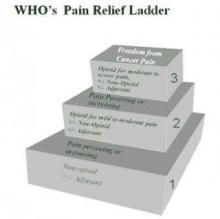Thanks to earlier diagnosis and better treatments, we’ve started thinking of some cancers as chronic diseases — similar to asthma and diabetes. Cancer survivorship is definitely on the rise. The CDC recently reported that the number of cancer survivors in the United States rose from 3 million in 1971 and 9.8 million in 2001 to 11.5 million in 2007.
With a growing number of cancer survivors — who can live for years and decades after diagnosis — there is a corresponding risk for pain medication addiction. Gone are the days when oncologists can prescribe opioids like candy, according to a session at the annual meeting of the American Academy of Pain Medicine. Opioid misuse — and substance abuse in general — is a growing problem among cancer patients, according to experts at the session.
“We’re starting to see a lot more in the way of substance abuse of every stripe, in people – not necessarily who are developing substance abuse problems after they are exposed to opioids for their cancer pain – but actually the opposite. There are a lot of folks making it to tertiary cancer care centers with a history of addiction.”
Dr. Passik gave an example of a female patient, who lived with metastatic breast cancer for 11 years and who had a pre-existing polysubstance abuse problem as well. “What’s different about this case from before I had gray hair and before I spent 25 years working in psycho-oncology? When I first started in this field, this woman’s life expectancy would have been measured in months and now it’s measured in years to decades.”
Cancer patients need to be screened for abuse potential, said Steven Passik, Ph.D., a professor of psychiatry and anesthesiology at Vanderbilt University. Abuse risk management strategies are regularly used in non-cancer pain management, he said. It’s time for oncologists and other cancer specialists to start using the same strategies.
Currently, in the WHO and NCCN guidelines, opioids are a mainstay for the treatment of cancer pain, said Dr. Dhanalakshmi Koyyalagunta, who is an associate professor of pain medicine at the MD Anderson Cancer Center in Houston. But “cancer is not a terminal disease any more … we have to change our paradigms as to how we approach these patients and how we treat them.” A good place to start is with a familiarity of the Clinical Guidelines for the Use of Chronic Opioid Therapy in Chronic Noncancer Pain.
It’s also important to identify and treat coexisting conditions that are frequently faced by cancer patients, said Diane Novy, Ph.D., who is a professor of pain management at MD Anderson. These include affective disorders, acute stress, problems related to cancer pain or treatment pain, family stress, and problems with work — and there are non-opioid treatment options for these issues.
Of course all this is not to say that opioids should never be used for pain management in cancer patients. Rather, clinicians need to screen for abuse risk factors before they prescribe these drugs and set up a monitoring system (random urine checks, pill counts, etc.).
Still — and not to belittle the suffering associated with substance abuse — having to change the way we look at cancer pain management to consider long-term treatment seems like a welcome challenge.
— Kerri Wachter (on Twitter @knwachter)


